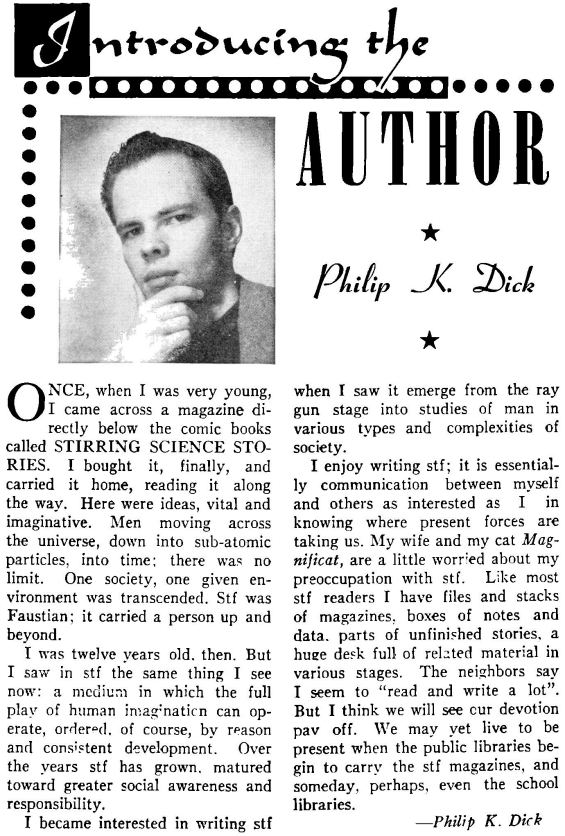Philip K. Dick
Biography
Philip Kindred Dick (December 16, 1928 – March 2, 1982) was an American science fiction writer known for his explorations of identity, reality, and perception. His works often dealt with themes of paranoia, alternate realities, simulated consciousness, and authoritarian control, making him one of the most influential speculative fiction authors of the 20th century.
Dick began writing in the early 1950s, publishing numerous short stories in science fiction magazines before transitioning to full-length novels. His breakthrough came with The Man in the High Castle (1962), an alternate history novel depicting a world in which the Axis powers won World War II. He followed this with some of his most renowned works, including Do Androids Dream of Electric Sheep? (1968), which later inspired Blade Runner (1982).
Later in life, Dick became obsessed with metaphysical and religious experiences, particularly after a mysterious 1974 visionary experience he referred to as "2-3-74." These experiences shaped his later works, including the semi-autobiographical VALIS trilogy, in which he explored Gnosticism, simulated realities, and divine intervention.
Despite his critical success, Dick struggled financially for much of his life. His paranoia, frequent use of amphetamines, and tumultuous personal relationships contributed to a deep sense of alienation, which is reflected in his fiction. He died in 1982, just before the release of Blade Runner, which would cement his status as a cultural icon.
Projects
Philip K. Dick’s body of work includes 44 novels and over 120 short stories, many of which were adapted into films, TV series, and graphic novels. His notable works include:
- Do Androids Dream of Electric Sheep? (1968) – A cyberpunk-style exploration of AI, human identity, and empathy, which inspired Blade Runner.
- The Man in the High Castle (1962) – A novel exploring alternate history and subjective reality, later adapted into an Amazon Prime series.
- Ubik (1969) – A surreal meditation on reality, entropy, and corporate control.
- A Scanner Darkly (1977) – A semi-autobiographical novel about drug addiction and surveillance, adapted into a 2006 film.
- VALIS (1981) – The first in a trilogy influenced by his 1974 mystical experiences, examining religion, simulation theory, and divine intervention.
Subprojects
Some of Dick’s works spawned significant adaptations, reinterpretations, and cultural discussions:
- Blade Runner Universe** – The Do Androids Dream of Electric Sheep? adaptation evolved into an expanded cyberpunk universe, influencing sequels, video games, and philosophical debates on AI.
- The Man in the High Castle Adaptations – The novel was reimagined as a critically acclaimed Amazon Prime series (2015–2019).
- The VALIS Trilogy** – This series remains one of Dick’s most complex and personal works, deeply embedded with Gnostic and philosophical themes.
Further Reading
For a deeper understanding of Philip K. Dick’s work and ideas, consider:
- Simulated Reality – A recurring theme in Dick’s works, particularly in Ubik and The Three Stigmata of Palmer Eldritch.
- Paranoia and Surveillance – Key motifs in A Scanner Darkly and Flow My Tears, the Policeman Said.
- Gnosticism and Metaphysics – Explored in VALIS and The Exegesis of Philip K. Dick.
- Cyberpunk Literature – The genre that Dick helped shape, later evolving through authors like William Gibson and Neal Stephenson.
- Dystopian Fiction – A central theme in many of his novels, such as The Man in the High Castle and Radio Free Albemuth.
